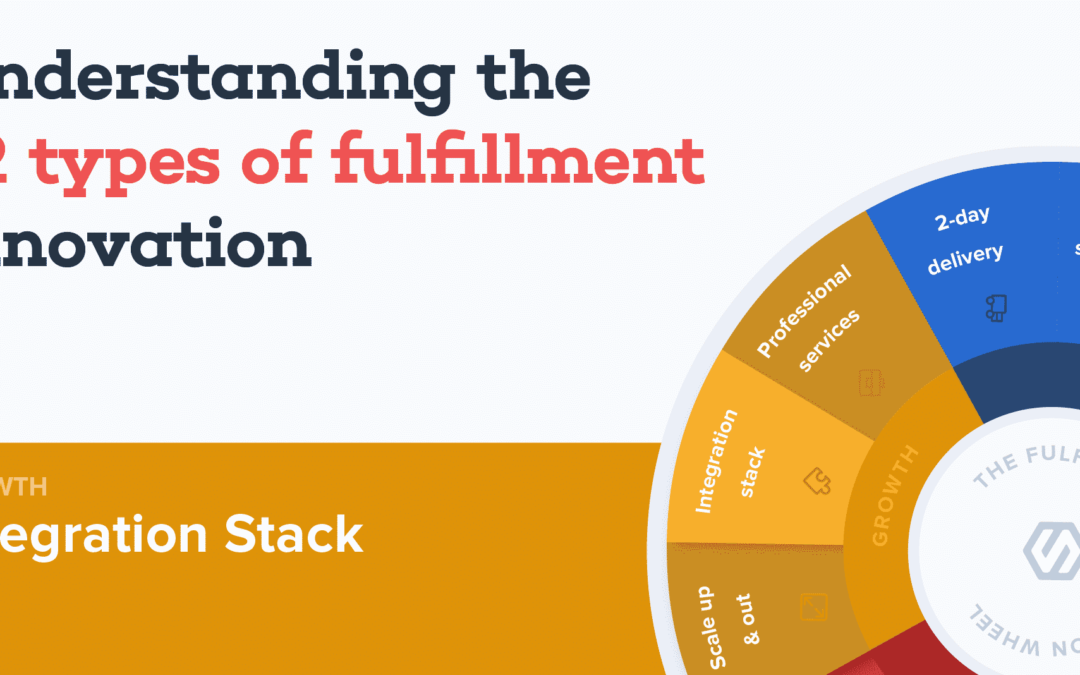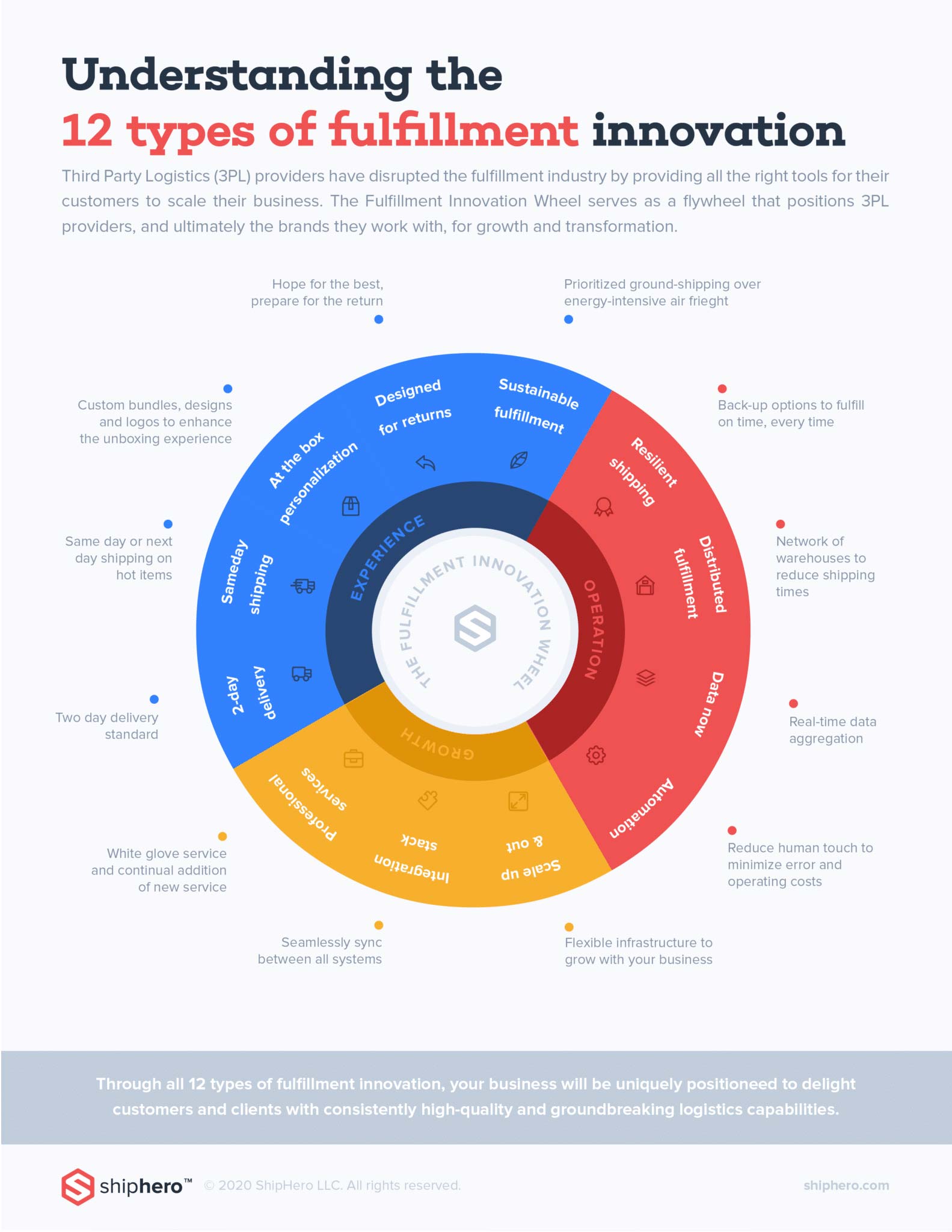
The Fulfillment Innovation Wheel: Integration Stack
ShipHero recently launched The Fulfillment Innovation Wheel to help 3PLs understand what capabilities and service offerings they need to implement in order to be successful and to help online retailers and brands choose which 3PL is right for them by allowing them to ‘check the boxes’.
The Fulfillment Innovation Wheel listed a set of twelve (12) capabilities that fulfillment providers and logistics companies should implement to continually delight their customers and push themselves towards greater success and innovation.
The twelve capabilities are:
- 2-Day Delivery
- Same Day Shipping
- At the Box Personalization
- Designed for Returns
- Sustainable Fulfillment
- Resilient Shipping
- Distributed Fulfillment
- Data Now
- Automation
- Scale Up and Out
- Integration Stack
- Professional Services
In this article, we will be diving into Capability #11: Integration Stack.
And be sure to stay tuned for future articles as we deep-dive into each capability.
Capability #11: Integration Stack
These days, all you need to start an online business is a laptop and a dream. With just a few clicks, more and more people are chasing their entrepreneurial passions by leveraging eCommerce platforms like Shopify, Wix and Squarespace, which provide all the software solutions that they need to get their business up and running.
Online businesses today are piecemealed together by a whole assortment of cloud applications, created by different app developers with different methodologies, to accomplish a specific task, e.g, returns, transactional emails, shipping labels, etc. However, without a way to tie them all together, the benefits from the expertise are lost when the entrepreneur is forced to spend enormous effort in navigating from one app to another, figuring out how to transfer information between all of their tools.
So, the eCommerce platforms like Shopify are not inherently powerful in and of themselves; rather, the real power of these platforms lies in their ability to integrate seamlessly with multiple solutions, tying in expertise from a whole plethora of applications that are otherwise customized to do one, specific thing.
Similarly, fulfillment providers need to be able to integrate seamlessly into your business, not to mention offer automation tools to speed up your workflows, leaving you time to focus on what really matters.
The Fulfillment Integration Stack
Retailers have come to expect that their fulfillment provider integrates into the platforms and applications that they are already using, allowing them to transfer data cross-applications and simplify their business processes. However, this is often no easy task.
Only 3PLs and fulfillment providers that are born from agile methodologies and built to scale can offer the wide-ranging integration methods that retailers demand. Without them, they will only slow down your business and as the old adage goes: time is money.
ShipHero’s integration marketplace offers a suite of valuable integrations that make it easy to connect our customers to a long list of shipping carriers and ecommerce platforms. As seen with our recent integrations with Alloy and Returnly, ShipHero is constantly expanding our capabilities and partnering with companies so that our customers have the very best options when it comes to easy, one-click integrations.
Along with our direct integrations, we also have over 20 partners that provide integrations and systems expertise, as well as an open API so that users can code their own integrations and webhooks if it’s not already on our list.
Our customers love the integration that ShipHero provides. We attribute this success on the Fulfillment Innovation Wheel to Capability #11: Integration Stack.
Stay tuned next as we cover Capability #12: Professional Services! At your service, professionally. ShipHero.

Learn more about ShipHero’s industry-leading warehouse management software.